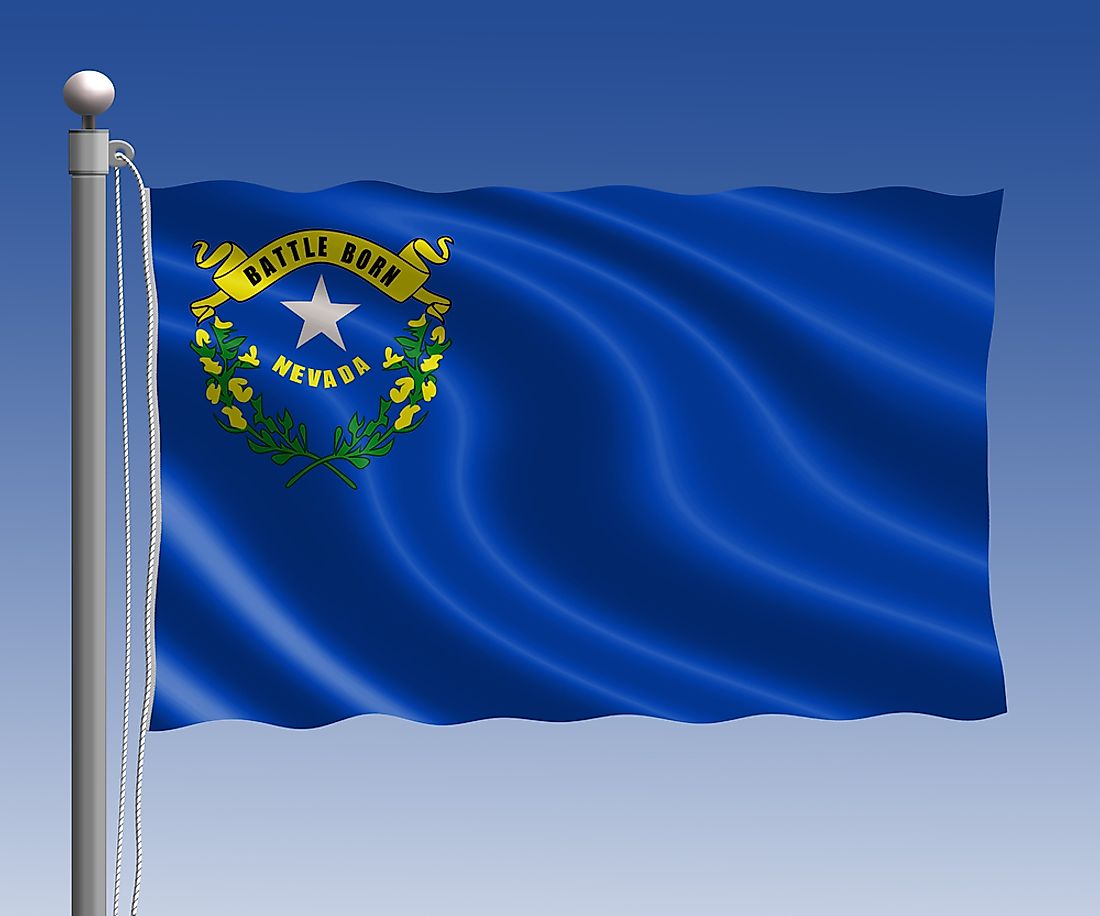Nevada State Flag

The US State of Nevada
Nevada is a state in the western regions of the United States of America sandwiched by the Rocky Mountains and the Sierra Nevada Mountains. Nevada is ranked seventh among the other fifty states size-wise and is one of the most sparsely populated. Carson City is the capital of Nevada. Nevada has several nicknames like the “Silver State” to show how deep mining of silver is rooted in their history and economy. Other nicknames are the “Battle Born State” for attaining statehood during the civil war, the “Sage-hen State,” or the “Sagebrush State” because of the native plant with the name.
The Flag of Nevada
Nevada’s flag is made up of a cobalt blue background fabric with a variation of Nevada’s emblem printed in the top left corner. A silver star is part of the emblem with the name of the state appearing below the star. Above the star are the words of one of Nevada’s mottos; “Battle Born.” Both the silver star and the motto refer to Nevada’s nicknames. Two bunches of the state flower, a yellow-flowered sagebrush, are beneath the star and the name.
The design of the Great Seal of Nevada was officially formalized after the region was formally admitted as a state by President Abraham Lincoln in 1864. The motto that was initially on the seal, "Volens et Potens," was substituted with the present motto “All for Our Country” in 1866. The seal of Nevada depicts the roots of the Nevada region. A depiction of a miner transporting his ore and quartz mill show the mining roots that have driven their economy. Both the miner and the mill are next to a mountain to depict the mountainous nature of Nevada. Transport and communication are shown by a steaming train and telegraph posts. Agriculture has always been a critical part of the economy and is represented in the seal by an image of a bundle of wheat, a plow, and a sickle. The arid nature of Nevada is represented by the sun beyond the mountains. The outer ring of the seal has the words “The Great Seal of the State of Nevada,” while the inner circle has the motto “All for Our Country,” and thirty-six stars to show that Nevada was the 36th state to gain entry into the Union.
History of the Flag
The first flag was designed in 1905 and was heavily based on the state’s silver and gold resources while the blue was based on the US’s flag. The present flag is based on a design from a 1926 design contest by Louis Shellback III. Conflict arose over the placement of the word “Nevada” which delayed the official adoption of the seal until a compromise was attained in 1929 when the bill was signed. Further changes were made to the flag in 1991 such that the word “Nevada” appeared beneath the star, not on top, and above the sagebrush. The changes made in 1991 produced the present-day design. A survey in 2001 ranks Nevada’s flag 55th out of 72 US state and Canadian provincial flags.











